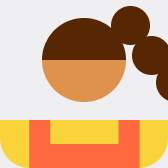POL (Polkadot) is a multi-chain platform that aims to promote interoperability between different blockchains, allowing independent blockchains to communicate and share data with each other. Proposed by Gavin Wood, co-founder of Ethereum, Polkadot aims to overcome the problem of blockchain islands and provide a more efficient, secure and scalable blockchain network solution.
The core design idea of Polkadot is to divide the blockchain into two parts: "Relay Chain" and "Parachains". Relay Chain is the main chain of the Polkadot network, which is responsible for the security and consensus mechanism of the entire network. Parachains are independent blockchains connected to the Relay Chain, which can customize their own rules and functions according to different needs.
The core advantage of Polkadot lies in its scalability and flexibility. By connecting multiple blockchains together, Polkadot can handle a large number of parallel transactions, greatly improve transaction throughput, and avoid the performance bottleneck problem of a single chain. Polkadot also uses its innovative "shared security" mechanism to enable all parallel chains connected to the Relay Chain to enjoy the security provided by the Relay Chain, thereby reducing the security cost of each parallel chain.
In addition, Polkadot has introduced its own governance mechanism, where token holders can participate in decisions such as protocol upgrades and network parameter adjustments by voting, thereby achieving decentralized governance. This allows Polkadot to maintain its open and community-oriented principles and continue to develop and iterate.
Polkadot's native token is DOT, which is mainly used for network governance, payment of transaction fees, and participation in slot bidding for parachains. In the Polkadot ecosystem, DOT tokens play a vital role.
In summary, Polkadot provides a decentralized and highly scalable blockchain platform through innovative technical architecture and governance mechanisms. It not only enhances the interoperability of the blockchain ecosystem, but also provides developers with more freedom and flexibility, and is an important part of the future development of blockchain technology.






